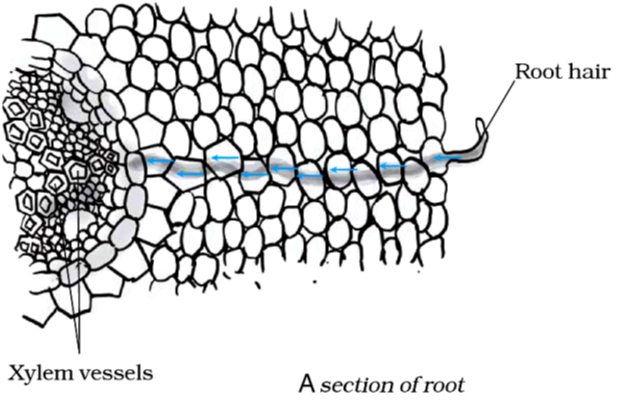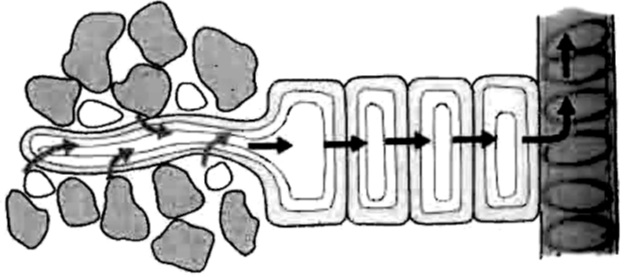- Books Name
- CBSE Class 7 Science Book
- Publication
- Param Publication
- Course
- CBSE Class 7
- Subject
- Science
TRANSPORT OF SUBSTANCES IN PLANTS

Plants absorb water and minerals from the soil through the roots. These are transported to the leaves for preparation of food (photosynthesis).
The food synthesized or prepared in the leaves is then carried to the other parts of the plant body. In plants therefore, transport involves two things :
(i) movement of water and minerals from the soil through the roots into the plant body and
(ii) movement of food prepared in the leaves to other plant parts.
Transport of Water and Minerals
• Plants absorb water and minerals through the roots. A large number of root hair are present on the roots. The root hair increase the surface area of the root for absorbing water and the minerals dissolved in water. The root hair absorb water present in between the soil particles. From the root hair, water along with the minerals enters the roots and from the roots, it moves upward towards the stem and leaves.

• The upward movement of water and minerals takes place through pipe-like structures or channels present throughout the plant body. These pipe-like structures or channels are made of special cells called xylem elements. Xylem is a vascular tissue for the transport of water and minerals in the plant.
• The xylem forms a continuous channel that connects roots to the leaves through the stem and branches. In this manner, water and minerals are carried to the entire plant.
Transport of Food
The food prepared in the leaves is transported to all parts of the plant. The vascular tissue that transports food is called phloem. Phloem is present along with the xylem inside the plant body. Xylem and phloem together form the vascular tissue.
TRANSPIRATION
The excess water is given out by the plants in vapour form to the atmosphere through their leaves. The process by which plants lose water in vapour form from their leaves is called transpiration.
Leaves contain tiny pores called stomata on their lower side. It is through these stomata that loss of water takes place by the process of transpiration.
Advantages of Transpiration
• It helps in the transport of water and minerals from the soil to the leaves.
• It produces a cooling effect, which protects the delicate cells from the hot sun.
• It provides rigidity to the plant body.

 Param Publication
Param Publication
